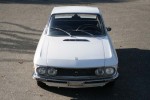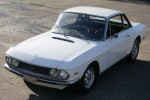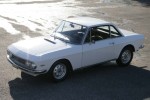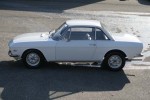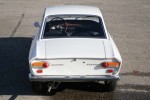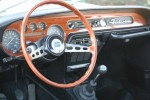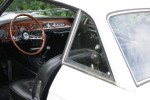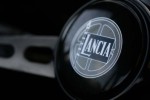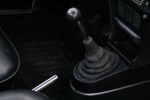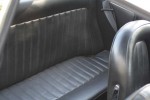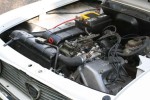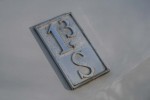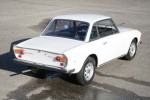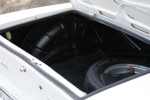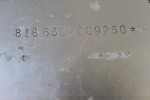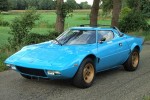Lancia Fulvia Coupé 1.3 S
- 1971
- 84.000 km
- Original
- EU title
- EU taxes paid
- Sold
In 1965 the Fulvia coupé had its first public appearance at the Turin Motor Show. Although the design was unique in appearance and efficiency, the performance was a bit tame.
The engine of the berlina 2C was increased to 1.216 cc and 80 bhp, not enough to make it a real sprinter. But the public loved it and the performance would come with time.
Soon after the introduction of the Fulvia the first HF was born. Still with a 1.2 engine, but tuned to 88 bhp. By leaving all nonessential stuff out of the interior, the weight of this car could be limited to 825 kg.
The combination of more power and less weight made this car suitable for racing and rallying. From 1967 there was a slightly larger engine of 1.231 cc, but with the same 80 bhp.
The same year the engine grew again and became 1.298 cc. This was the basic for the engines used in all future Fulvias, except the 1.6 HF.
The first car equipped with this engine was the 1.3 Rallye. It had the same equipment as the first coupés, but with the new engine and 87 bhp.
Based on this car, the new HF was developed. It had the same 1.3 engine, but now with 101 bhp. Most of these cars were custom-made and prepared for rallying.
As a tribute to the rally cars the 1.3 S Rallye became available. The 1.3 engine had 90 bhp and it had aluminum doors, bonnet and boot-lit.
Finally in 1968 the fast and famous 1.6 HF was introduced. Except for the bodyshell, almost everything was different then the normal Fulvias and available with 115 or even 132 bhp. This car was specially developed for winning races and that was exactly what it was going to do!
In 1969 the whole line of Fulvias got a revision, the second series. From then on all types berlina as well as coupé have the 1.3 engine.
Further changes includes: another grill with slightly different headlights, slightly different dashboard with new meters and new knobs, five-speed gearbox, new type of disc brakes, a diaphragm clutch, stiffer springs, an alternator, an electrically operated fan and the oil cooler was dropped.
The 1.6 HF stayed available next to the 1.3 S versions. Eventually the 1.6 became available as 1.6 HF Lusso. It had the same equipment as the 1.3 S versions, including it's bumpers, but with the 115 bhp of the 1.6 engine.
In 1972 the production of the 1.6 HF Lusso stopped. To keep a sporty model available the Monte Carlo version came out in 1973.
It was a tribute to the rally cars that won that year the Monte Carlo Rally and it had no bumpers, a black bonnet, extra lights and a Rallye Monte Carlo plaque. But it had the 1.3 S engine and it is not exported a lot.
In 1974 the third series wasintroduced. The changes were mainly in the interior, like new instruments and a new steering wheel.
A new batch of Monte Carlos was produced and as a special edition the Safari came out. It had the 1.3 S engine, but it had no bumpers and exclusive alloy wheels.
In 1976 the last Fulvia coupé was produced.
“ your classic auto specialist; world-wide collector car expertise ”
We buy, sell, broker, locate, consign and appraise exceptional classic, sports and collector automobiles, arrange transport, customs formalities and registration.
Jaguar, Ferrari and Maserati expertise, though our collection includes a wide variety of other superior antique, vintage, prewar and race cars.
Contact us when you are serious about owning or selling a fine classic motor car or motorcycle. Geneva, Switzerland-based, we serve clients world-wide.
Chemin des Tulipiers | 1208 | Geneva | Switzerland | +41 (0) 787.055.745
